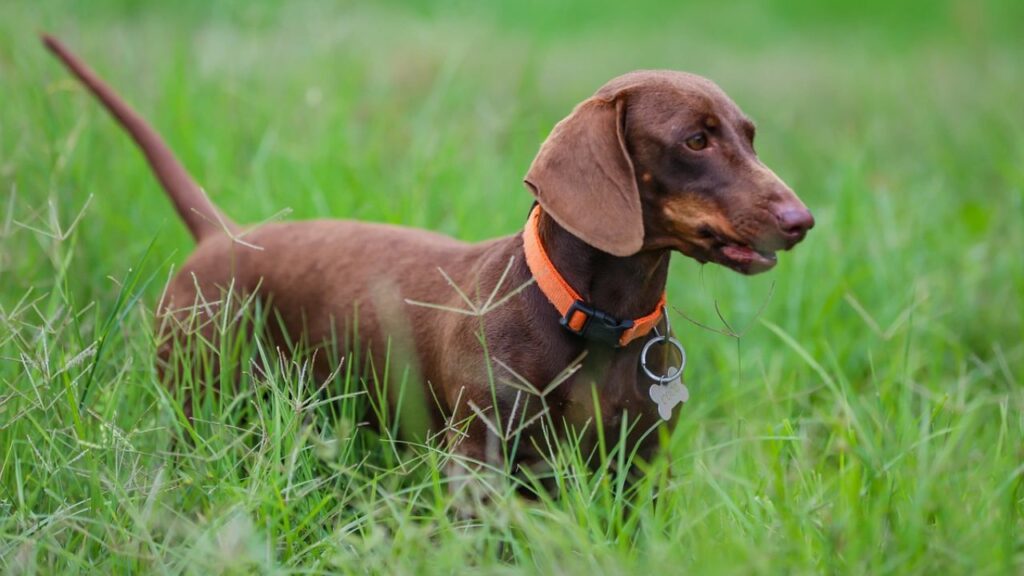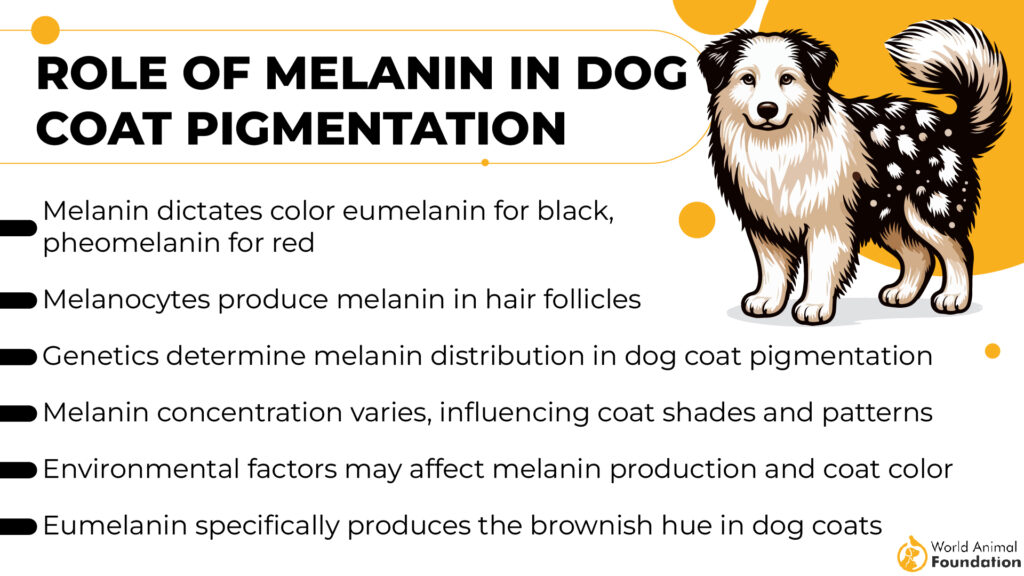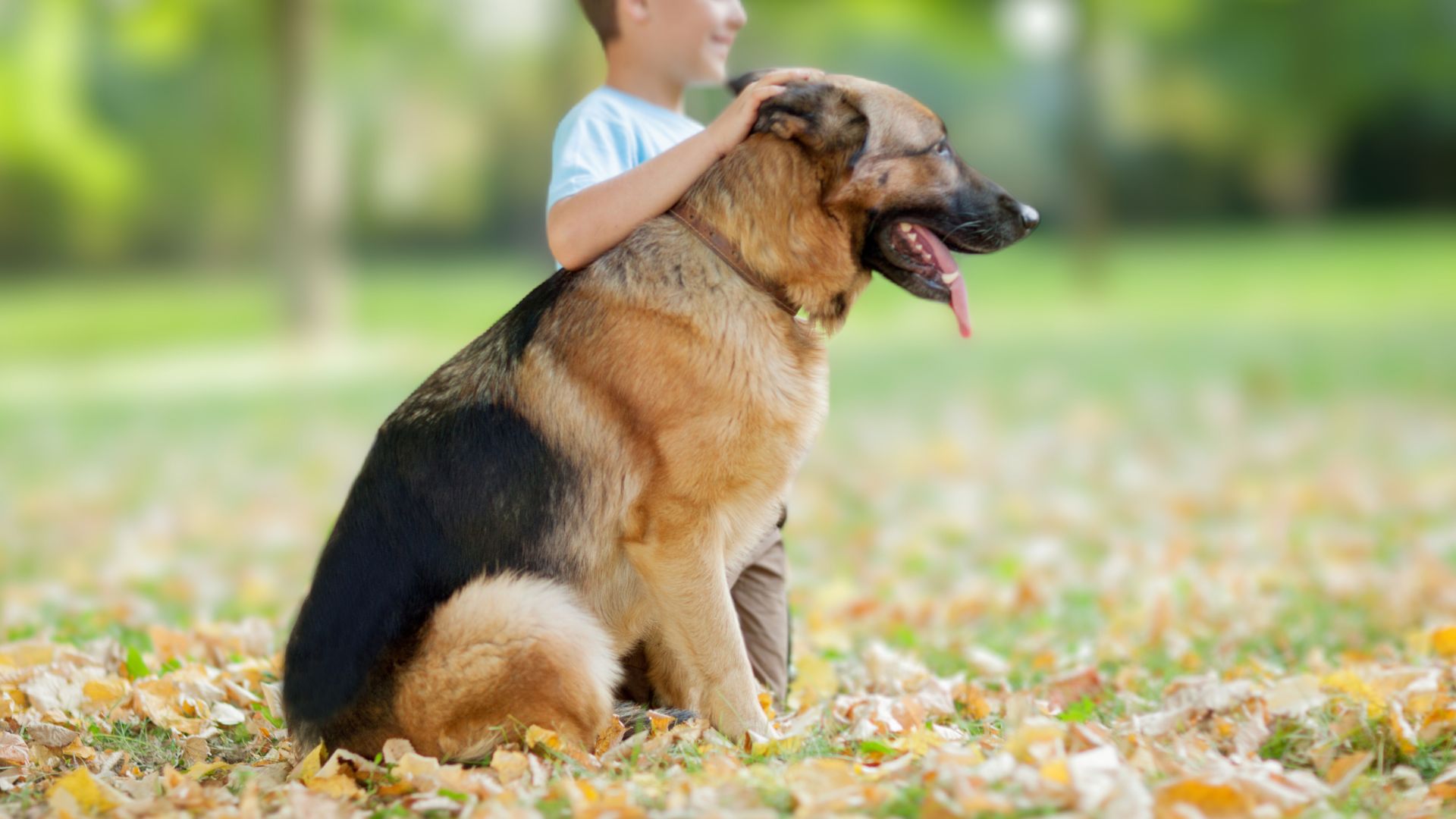WorldAnimalFoundation.org is reader-supported. When you buy through links on our site, we may earn an affiliate commission. Learn More
Every dog is special, and a big part of their charm is their unique coat. While dog coats can range from black, brown, and white to red, yellow, gold, cream, gray, and even blue, most breeds display a variety of colors, shades, and patterns. Among the most popular colors are black, brown, and white.
The rich palette of coat colors in domestic dogs is all down to genetics. The color of a dog’s coat is determined by the genes passed down from its parents. Among these, chocolate-coated dogs truly shine with their distinctive, eye-catching hues.
There’s something undeniably heartwarming about their warm, chocolatey tones—whether it’s deep dark chocolate or light brown, these dogs have a special way of standing out.
But beauty is just one facet of these dogs. As we often remind, choosing a dog should be about more than just its color. It’s important to consider a dog’s temperament and the care it requires to see if it fits well with your lifestyle. If you find yourself drawn to these brown dogs, here we’ve outlined seven of the top chocolate dog breeds that are sure to capture your heart.
Dog Breeds with Chocolate Coats
1. Chesapeake Bay Retriever

| Breed Classification | Sporting group |
| Lifespan | 10-13 years |
| Temperament | Affectionate, bright, sensitive |
| Intelligence | Above average |
| Tendency to bark | Moderate |
| Maintenance Level | Low |
The Chesapeake Bay Retriever, often called a Chessie, is a truly American dog breed known for its excellent duck hunting skills. These dogs are loyal, happy, loving, and full of energy. One of the coolest things about them is their waterproof coat, which is wavy and feels a bit oily. This helps them stay dry and warm, even when they jump into cold water.
Chessies are usually one solid color—either a rich chocolatey brown, a reddish-brown called sedge, or a pale tan known as deadgrass. They have bright yellow-amber eyes that really stand out against their coat.
These dogs are a bit more complex emotionally than your average hunting dog. While they are smart and learn quickly, they also like to do things their own way sometimes. Chessies are protective of their family and are polite—but not too friendly—to strangers, making them great watchdogs.
AKC points out that they don’t need a lot of grooming, just a good brush once a week to manage shedding. Chessies are happiest when they have a job to do and get plenty of exercise. They love activities like hiking, running, hunting, and especially swimming.
2. Dachshund

| Breed Classification | Hound |
| Lifespan | 14-16 years |
| Temperament | Affectionate, independent, loyal, brave |
| Intelligence | Above average |
| Tendency to bark | High |
| Maintenance Level | Medium |
The Dachshund, originally from Germany and known as the “badger dog,” has a long, low body perfect for squeezing into fox dens during hunts. This breed became very popular in Great Britain, even catching the interest of Queen Victoria.
PetMD states that Dachshunds come in three types of coats: smooth-haired, long-haired, and wire-haired. They often have a solid base color like black or chocolate, with lighter markings on their legs, face, chest, or ears.
Despite their independent streak, Dachshunds are loving and loyal family pets. They’re full of life and have a loud bark that makes them great watchdogs. Their bravery can sometimes be a bit reckless because they were originally bred to hunt on their own. They can be a bit aloof with strangers, often barking or growling at them.
Grooming needs vary: Long-haired dachshunds need daily brushing to avoid tangles, while smooth-haired ones just need a quick brush every few days and a monthly bath.
Dachshunds are well-suited to apartment living due to their small size, as long as they get enough attention and exercise. They’re also good companions for older people because they don’t need excessive exercise.
3. Doberman Pinscher

| Breed Classification | Working group |
| Lifespan | 10 to 13 years |
| Temperament | Loyal, fearless, alert |
| Intelligence | Very high |
| Tendency to bark | Medium |
| Maintenance Level | Medium-High |
The Doberman is a breed that originated in Germany, developed by Karl Friedrich Louis Dobermann. This dog has a square, compact build that showcases its athleticism, endurance, and agility. Dobermans have very short coats and come in colors like black, red, blue, and fawn, either solid or mixed.
Historically, Dobermans were often used as guard dogs and police dogs, which led to a reputation for aggression. However, modern Dobermans are known for their even temperament, intelligence, loyalty, and trainability. PetPlan notes that they love being around people!
Dobermans are best suited for active, experienced owners who can provide strong, consistent leadership. They may not be the best match for families with small children or other pets, as they can display strong guarding instincts and a tendency towards assertiveness.
These dogs are very energetic and need plenty of exercise to stay healthy and happy. Daily activities like long walks, hikes, or jogs, along with access to a large fenced area for running, are essential. Despite their energy, Dobermans are low-maintenance when it comes to grooming due to their short coat, requiring only minimal effort to manage shedding.
4. Border Collie

| Breed Classification | Herding group |
| Lifespan | 13-16 years |
| Temperament | Obedient, affectionate, friendly |
| Intelligence | Very high |
| Tendency to bark | High |
| Maintenance Level | Medium-high |
Originally from Scotland, the Border Collie was first known as the “Scotch Sheep Dog.” This breed is famous for its intelligence and working ability, often regarded as the most intelligent dog breed.
Border Collies have a thick, weather-resistant double coat that can be either smooth or rough. They come in a variety of colors, including the common black and white, as well as rarer shades like lilac and chocolate.
These dogs are highly energetic, playful, and thrive on having a job to do, such as herding, agility, or obedience training. They require a lot of mental stimulation to keep their sharp minds engaged. Due to their herding instincts, Border Collies may not be the best fit for families with young children or other pets, as they tend to herd them.
Border Collies are friendly with people they know but can be reserved around strangers. Early socialization with people and other animals is crucial to prevent shyness. They need regular brushing, at least once or twice a week, to maintain their coat, and more frequently during shedding season.
5. American Cocker Spaniel

| Breed Classification | Gundog |
| Lifespan | 12-15 years |
| Temperament | Active, happy, affectionate, gentle |
| Intelligence | High |
| Tendency to bark | Average |
| Maintenance Level | Medium |
The Cocker Spaniel is a lively and sturdy medium-sized dog known for being the smallest of the sporting breeds. Originally popular as hunting dogs in the 18th and 19th centuries, they were especially good at flushing out birds like woodcocks from underbrush thanks to their compact and strong bodies.
Cocker Spaniels are famous for their large, dark eyes and huge ears that often dip into their water bowls. Their coat can be solid-colored, including shades like black, light cream, red, or chocolate, or it can be multi-colored.
PDSA asserts that these dogs are incredibly affectionate, full of energy, and very devoted to their families. They are smart and eager to please, making them easy to train and very capable in various tasks, including drug detection, thanks to their excellent sense of smell.
Cocker Spaniels have high energy levels and need plenty of exercise and mental stimulation. They thrive on activities like swimming and running off-leash, particularly if it involves water, birds, and exploring new environments. Regular and thorough grooming is also essential to keep their coat in good condition, so it’s important to start grooming early and keep it up consistently throughout their life.
6. Labrador Retriever

| Breed Classification | Sporting Group |
| Lifespan | 10-13 years |
| Temperament | Loyal, affectionate, patient & friendly |
| Intelligence | Very high |
| Tendency to bark | Low |
| Maintenance Level | Medium to high |
Labradors, often affectionately called Labs, are one of Canada’s traditional working water dogs, originally used for retrieving ducks and assisting fishermen. Today, they’re celebrated not only for their friendly and lovable nature but also for their roles as assistance, detection, therapy, and law enforcement dogs.
These dogs are usually large and muscular with a short, dense coat that’s water-repellent, making them excellent swimmers. According to UCDavis, Labradors come in three main colors: black, yellow, and chocolate, and it’s not uncommon to find all three colors in a single litter.
Known for their exceptional friendliness, loyalty, affection, and patience, Labrador retrievers make excellent family pets. They are good with children and other pets, embodying the perfect companion for a lively household.
Labradors are highly intelligent and eager to learn, thriving on mental challenges and consistent, confident handling. They are energetic and need plenty of exercise to match their enthusiasm—without it, they might find less desirable ways to expend their energy, like chewing on furniture or digging in the garden. Their thick, water-repellent double coats are relatively easy to groom.
7. German Shepherd

| Breed Classification | Herding group |
| Lifespan | 10 – 14 years |
| Temperament | Alert, fearless & faithful |
| Intelligence | Very high |
| Tendency to bark | Medium |
| Maintenance Level | Low-Medium |
The German Shepherd Dog, a breed created in the 1890s by German cavalry officer Max von Stephanitz, was designed to be the ideal herding dog. Recognized by their bushy tails, pointy ears, and wolf-like appearance, German Shepherds have consistently ranked among the top ten most popular breeds for many years.
A fascinating aspect of German Shepherds is that their final coat color, which can be solid liver (a reddish-brown) or liver and white in distinctive patterns, is not revealed until they shed their puppy coats.
Renowned for their high intelligence, German Shepherds are considered one of the smartest dog breeds. Their intelligence, coupled with their obedience and trainability, makes them exceptionally adaptable and versatile. This has led to their widespread use in roles such as military, search and rescue, and police work.
German Shepherds are known to be very safe family pets when properly trained and socialized from an early age. They are highly active dogs that thrive on strenuous activities. In terms of grooming, their coat maintenance is relatively straightforward, generally needing just a quick brushing every few days to remove loose hairs. However, they do shed more intensely once or twice a year, during which more frequent grooming and a handy vacuum can be beneficial.
Understanding Your Dog’s Unique Colors

Ever wonder why dogs have different coat colors? It’s all thanks to melanin, the pigment that colors their fur. Just like in our hair, melanin comes in different types, which can make a dog’s coat black, red, or even chocolate brown. Here’s a quick look at how it works!
Conclusion
When it comes to choosing the best brown dogs, there’s a variety of dog breeds to fall in love with. From the solid brown and chocolate brown fur of search and rescue dogs to the light brown and smooth coat of wiener dogs, each dog breed brings its own charm.
Whether you’re drawn to the energetic spirit of a dark brown dog that thrives in challenging environments or you’re searching for a loyal companion with a rich chocolate coat color, there’s a perfect brown companion out there for everyone.




